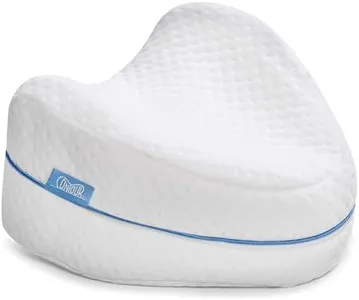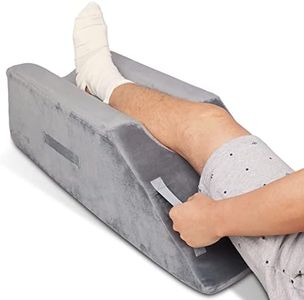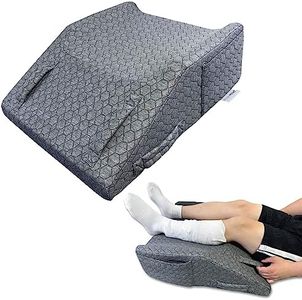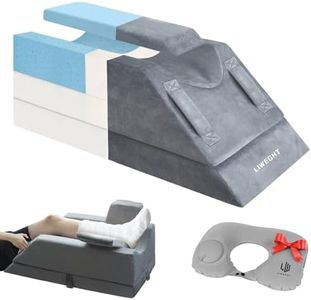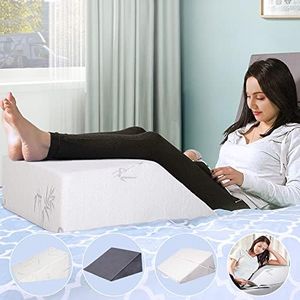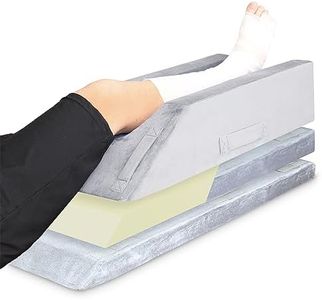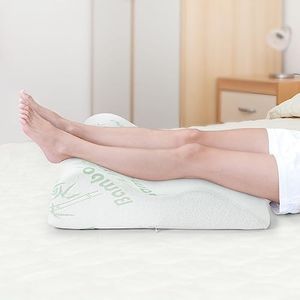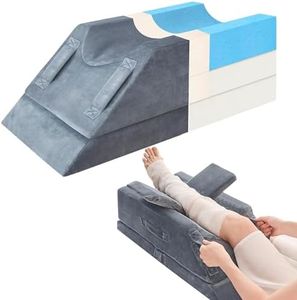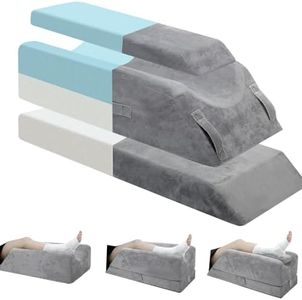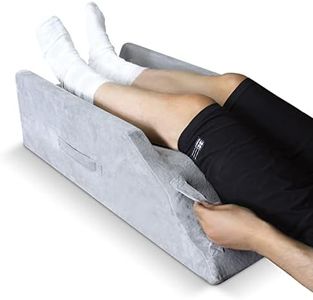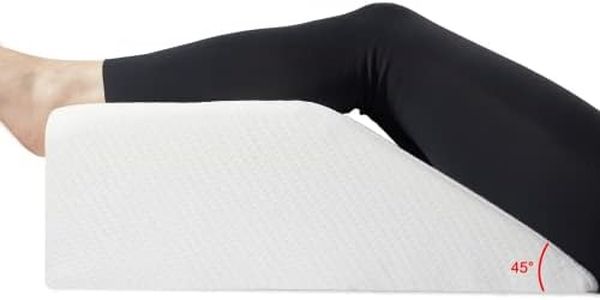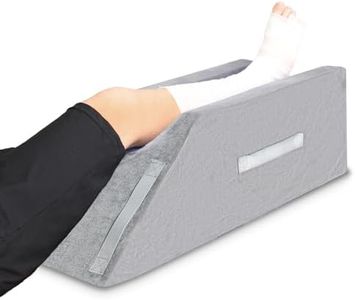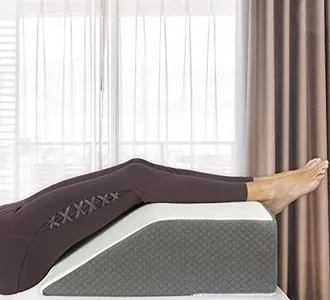We Use CookiesWe use cookies to enhance the security, performance,
functionality and for analytical and promotional activities. By continuing to browse this site you
are agreeing to our privacy policy
10 Best Leg Elevation Pillows
From leading brands and best sellers available on the web.Buying Guide for the Best Leg Elevation Pillows
When choosing a leg elevation pillow, your main goal is to find a pillow that supports your legs comfortably and effectively elevates them to help with circulation, reduce swelling, or relieve pressure. Selecting the right leg elevation pillow comes down to understanding your own specific needs—such as whether you need it for post-surgery recovery, relief from varicose veins, or general comfort. Pay attention to how the pillow will fit into your routine; for example, whether you plan to use it in bed, on a couch, or for short rest periods. Picking a pillow that aligns with your body type, sleeping habits, and medical advice will provide the most benefit.Height of ElevationThe height of elevation tells you how many inches or centimeters the pillow will raise your legs. This is important because the right height can help with blood flow and swelling—higher pillows may be necessary for some medical conditions, whereas a gentle incline is better for simple comfort or light swelling. Leg elevation pillows generally come in low (4-6 inches), medium (7-9 inches), and high (10 inches or more) rises. If your goal is recovery from surgery or you're following a doctor's advice, a higher elevation might be needed, but for relaxation or mild swelling, a lower or medium option typically suffices.
Angle/InclineThe angle or incline refers to how steeply the pillow slopes upward. A higher incline can promote quicker reduction of swelling but may be uncomfortable for long periods, while a gentle slope is restful and better for sleep. Steep inclines (around 45 degrees) are used for short, therapeutic sessions, whereas gentle inclines (15–30 degrees) are usually more comfortable for extended use or overnight. Think about how long you plan to use the pillow at one time and whether you want more comfort or more aggressive elevation.
Length and WidthLength and width determine if your entire legs will fit on the pillow and whether it will suit your height and body size. Longer pillows support from the heel to the knee or even to the thigh, which helps with full leg circulation. Wider pillows are ideal if you move during sleep or want both legs elevated at once. People with longer legs or who want whole-leg support should look for a pillow long enough for their needs, whereas those wanting only ankle or calf support might choose something shorter.
Material and FirmnessMaterial and firmness affect both comfort and the kind of support you will receive. Memory foam pillows provide contouring and firm support, which helps keep the legs in place, while softer foams or fiber-filled pillows offer a cozier, plusher feel but may flatten over time. If you need stability and lasting shape, firmer memory foam works best; if you prefer softness and only occasional use, a softer material may work. Match the firmness to your comfort level and the duration of time you expect to spend elevated.
Cover Fabric and WashabilityThe cover fabric should be soft against the skin and, ideally, removable and washable, since leg elevation pillows are often in contact with bare skin or wounds. Breathable, hypoallergenic materials can prevent irritation, while a washable cover keeps things hygienic. If you have allergies or expect the pillow to get dirty often, a removable and machine-washable cover is especially important.
